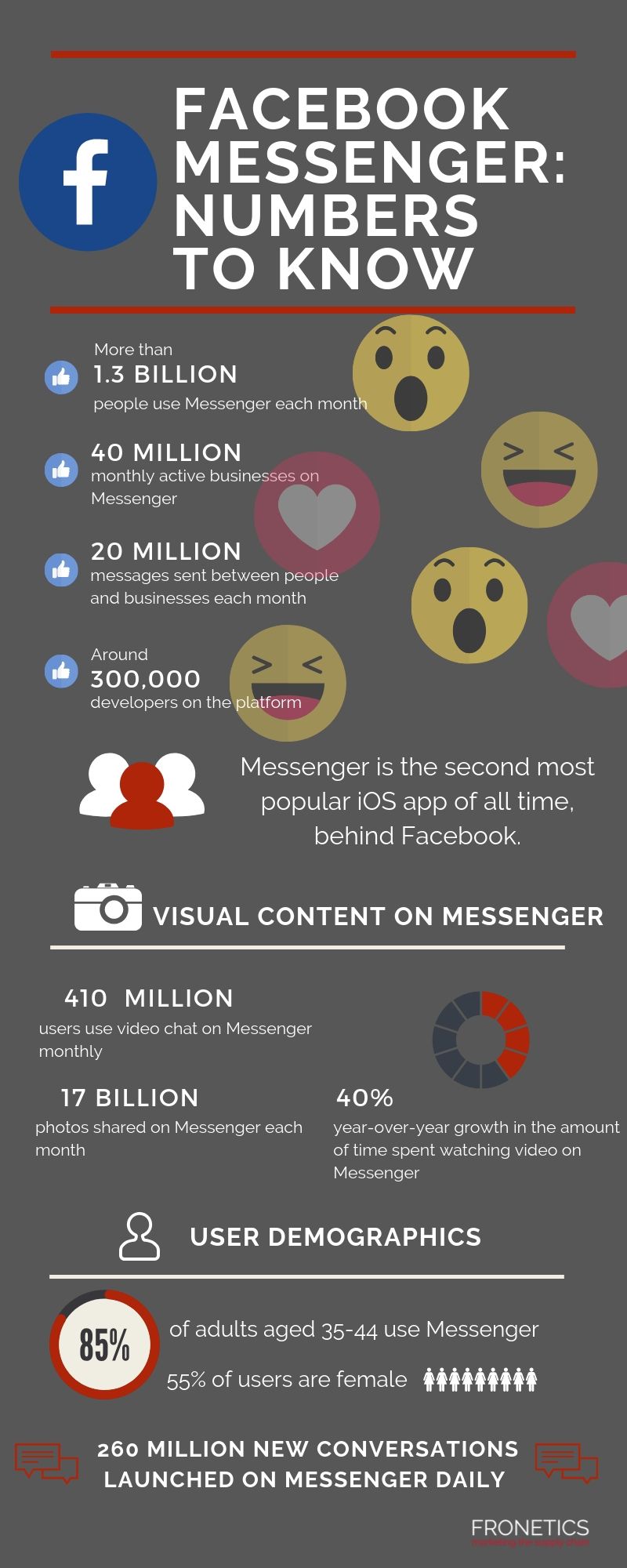
by Jennifer Hart Yim | Oct 29, 2019 | Blog, Logistics, Marketing, Social Media, Supply Chain
As other social networks face unprecedented controversy, LinkedIn is still the best professional social media tool. But too many Supply Chain professionals aren’t getting the most from it.
This guest post comes to us from Argentus Supply Chain Recruiting, a boutique recruitment firm specializing in Supply Chain Management and Procurement.
Awhile back, following Microsoft’s acquisition of LinkedIn, we wrote an article asking “Is LinkedIn in Trouble?” In that post, we identified a few shortcomings that we thought threatened to detract from its user promise as being premier social network for professionals. It was full of spam content that had no relevance to anyone, let alone people looking to network, and it had a somewhat faulty search functionality.
A few years on, and the network is still thriving. A recent article in the New York Times caught our attention, and has us revisiting where LinkedIn stands in today’s social media landscape – for job candidates, hiring managers, and people looking to network in general. Titled, “Why Aren’ Talking About LinkedIn?”, it examines some of the controversies around other social networks, and how LinkedIn has managed to steer clear.
Twitter has gained a reputation for trolling and harassment. Facebook, for its part, has gained a reputation for allowing its data to be compromised, threatening users’ privacy, and for allowing foreign actors to influence the U.S. election. Meanwhile, LinkedIn soldiers on. It’s not the savviest, smoothest social network experience – not that it ever has been – but it’s still one of the most useful.
We’re recruiters who are highly active on LinkedIn (check out our page there, if you haven’t.) From our perspective, the social network is still highly relevant to the career world, whether it’s researching prospects, finding candidates, looking for a job, or networking.
LinkedIn has taken efforts to modernize, and those efforts have reinforced the network’s core promise – helping people connect in a professional capacity, and share thought leadership – while avoiding the disinformation and harassment scandals that plague other social media platforms of similar size. As the Times puts it, “the site hasn’t proved especially useful for mainstreaming disinformation, for example, nor is it an obvious staging ground for organized harassment campaigns.”
Why has Linkedin avoided these issues? A few things set it apart from other social networks:
- Users communicate in a business-appropriate way. They realize that a future colleague, boss or hire could be reading what they post, so they’re less likely to post polarizing material.
- Similarly, LinkedIn isn’t political. Because it’s restricted to professional or professional-like communication, it’s managed to avoid some of the political filter bubbles common to other social networks. Political ads are banned on the platform.
- The majority (82%) of LinkedIn’s revenue comes from premium subscriptions, rather than advertising, which allows LinkedIn to rely less on mining user data for revenue. LinkedIn certainly holds a tremendous amount of its users’ data, but this might help explain why it’s had fewer data and privacy-related scandals than other social networks.
LinkedIn has been crisis free, and that’s allowed it to continue to chug along, owning the considerable niche that it’s owned since 2003. Other job sites and career apps have flourished – and floundered – in the meantime, but LinkedIn remains.
In 2019, the network has done a lot to address the biggest shortcomings we wrote about before. Spam posts are much reduced. The interface is lean and responsive, having worked out most of the kinks involved in its latest redesign. As the Times article describes, if you go on LinkedIn today, you see promotional content, but you also see a lot of people using the network for thoughtful professional communication. You see a lot of people who use its powerful content creation channels like LinkedIn Publisher and native video to boost their personal brand and generate career opportunities. It’s powerful not just when looking for a job: people use it to connect with possible suppliers, identify talent, learn best practices, network, and more.
Yet so many professionals still aren’t getting the most out of Linkedin.
In Supply Chain and Procurement, which is our area of recruitment specialty, some of the best candidates have highly inactive profiles. They don’t go into detail about accomplishments (e.g. major projects, cost savings, business transformation). Some of these candidates still don’t treat LinkedIn as a vital tool to build their personal brand, and see it more as an “online resume” to be updated whenever they’re looking for a job. Their profiles are almost empty.
We still find those candidates for our clients. Boolean searches are a powerful tool, as is the tried and true method of talking to as many people as possible. But we often wonder: how many other great Supply Chain professionals are out there who don’t put in the small amount of time required to get on our radar by being more active about their personal branding?
Consider your daily time allotted to social media. How much of it goes to networks like Facebook and Twitter? Isn’t it worth it to take a small chunk of that time and post about career-related topics in a more mentally healthy environment, and boost your brand in the process?
Say you’re a specialist. A Strategic Sourcing professional with expertise in facilities and real estate Procurement, or a Supply Chain analyst who’s highly skilled with SAP and other Enterprise Resource Planning (ERP) applications. Those are requirements our clients – some of the top companies in the world – have all the time. By getting more active on LinkedIn, you’re owning your niche, and rising to the top when people search for people with your speciality. Recruiters, but also suppliers, and colleagues. And trust us, people are searching. Every day.
So what small steps can you take to treat LinkedIn more like a marketing tool, and less like a “set it and forget it” online resume?
- If you aren’t connected to many other Supply Chain professionals, expand your network. Most people are open to unsolicited connection requests if they’re not transactional. Reach out to connect with people at interesting organizations, and start conversations that aren’t about looking for a job.
- Share relevant content with your network, with your comments, and attempt to start discussions. LinkedIn has a new “Top News” feature – on the sidebar of the homepage – which can give you some current topics. Pick things that make you think, and share your thoughts. Publications like Supply Chain Dive, SCMDojo, and Procurious have lots of great thought-provoking professional content to look at as well.
- Think about publishing an article or two through LinkedIn Publisher. What big issues or changes are you facing in your Supply Chain practice? What are you most excited about? A longer-form article can help you organize your thoughts and show off expertise.
- Make sure that your profile has relevant accomplishments, and detailed keywords related to your niche (e.g. the categories you work on in Procurement).
- Be persistent, but not relentless. The LinkedIn algorithm – in our experience – tends to reward people who are more active. But don’t post all over the place indiscriminately – pick and choose topics about which you have something to say.
But this is just the tip of the iceberg. If you’re a Supply Chain or HR professional, how is LinkedIn is working for you in 2019, either in looking for jobs, or hiring? Let us know in the comments!
Related posts:


by Fronetics | Oct 24, 2019 | Blog, Marketing, Social Media
Facebook Messenger is the latest trend in chatbots for the supply chain. Here are powerful numbers to prove why your brand needs to be active on the messaging platform.
Patience is a virtue of the past. Today’s buyers want (and expect) marketers to actively engage with them throughout the purchasing journey. And offering them generic information won’t work — they want personalized communications based on who they are, what they have purchased in the past, and what they are interested in buying. Businesses can no longer afford a one-size-fits-all communication strategy.
The focus has shifted from passive marketing to engagement, which has marketers scrambling to be everywhere, at all times, to ensure a positive customer experience. In response, we’ve seen an increase in chatbot usage in the supply chain and logistics industries. Chatbots help improve the customer experience through automated systems that emulate human conversation.
Chatbots rely on the popularity of messaging apps. And, luckily for marketers, messaging app usage is on the rise:
- There were 2.18 billion messaging app users globally in 2019. (Statista)
- At the end of 2018, 78% of the world’s smartphone users were messaging every month. (Facebook)
- By 2021, it’s predicted that the global user base for mobile messaging apps will have risen by a further 23%. (Facebook)
- People share more than 17 billion photos on messaging apps every month. (Mobile Monkey)
And though WhatsApp has the highest percentage of users worldwide, Facebook Messenger has taken over as the most popular messaging app in the U.S. With over 1.3 billion monthly users, this powerful messaging platform holds a lot of potential for marketers.
[bctt tweet=”20 billion messages are sent between people and businesses every month.” username=”Fronetics”]
Even though marketers know that Facebook Messenger is a platform they can no longer ignore, supply chain and logistics brands have been slower to jump on board. But if you’re questioning if you should be using Facebook Messenger to engage with audiences, the answer is yes.
Supply chain businesses can use this platform to deliver content, engage with customers one on one, and offer superior personalized customer service, all of which result in high-quality relationships and leads.
Here are some staggering numbers to back up our point.

(Made with Canva)
Final thoughts
What was once thought of a teen social app, Facebook Messenger is now dominating the business world with increasing popularity and no sign of slowing down. In fact, we as a brand have found huge success using Messenger to engage with new leads. In the first 24 hours of using the platform, we were able to set up a meeting with a new prospect. That was just in the first 24 hours. This prospect turned out to be our next client, and the initial connection was all made through Facebook Messenger.
Related posts:


by Jennifer Hart Yim | Oct 22, 2019 | Blog, Current Events, Logistics, Manufacturing & Distribution, Strategy, Supply Chain
Amazon has changed the way we do business. Supply chain companies need to get on board with Amazon’s e-commerce strategy or risk losing business.
It is no secret that Amazon has dominated the online retail industry. Amazon Prime has shifted consumer expectations so that waiting 5-7 business days for your online order is no longer acceptable. With people now ordering anything from couches to groceries online, companies need to get on board with this shift to e-commerce or risk missing out on many sales.
Consumers now more than ever want access to more inventory no matter if they are shopping online or in stores. Many companies report the struggle of trying to keep up with this retail giant, and current-day supply chains have certainly felt the impact.
Historically, supply chains have been set up to support a network of stores using the multichannel business model. This includes retailers managing their different channels almost as separate businesses. These channels are what businesses use to get their goods and services to their consumers. For example, many retailers use brick-and-mortar stores as well as e-commerce when it comes to selling.
So, what’s the problem with this? Well, the customer’s experience can vary depending on the shopping channel they choose. Retailers often keep their online and brick-and-mortar inventory separate, which can lead to a frustrating shopping experience for the customer.
I am sure at some point in your life you have had the experience of walking into a store looking to return an online order only to find out it must be returned to the company through the mail. Customers do not view a brand in silos, and the same selection of inventory is expected whether they are shopping online or in a physical store. Companies also run the risk of losing a sale if the exact item the consumer wants is unavailable or sold out. This is one area that allows Amazon to shine because they maintain one pool of inventory that is not separated by different channels of business.
A 2016 UPS survey found that, for the first time, shoppers revealed they bought more of their purchases online than in stores. It’s hard to tell what is the main driver behind this shift, but you can’t help but think of Amazon. It’s hard to comprehend how other companies not only compete but just even keep up with the trillion-dollar company with a revenue of $10.07 billion in 2018.
This is where the omnichannel business model comes into play. Omnichannel combines physical and online commerce to create a more seamless shopping experience for the consumer. While this business model is not a result of Amazon, it certainly puts companies in a better position to compete. The goal here is to provide the same customer experience throughout each channel while ensuring the product reaches the customer as fast as possible.
Characteristics of an omnichannel business model include:
- Buy online pick up in stores
- Stores shipping to other stores
- Dropshipping
- Order fulfillment from store
Nordstrom finding ways to differentiate from the competition
Online shopping provides many benefits to consumers, but it does not come without its own challenges. It is fairly common to buy a shirt online only to find out it is the wrong size. It can be a hassle to mail the item back, and consumers often opt out of this and chalk the purchase up to a loss. Nordstrom understands this pain point and took it upon themselves to offer a solution by creating service hubs called Nordstrom Local. The sole purpose of Nordstrom Local is to make the online shopping experience effortless. While these hubs do not contain designated inventory, they provide a handful of services to the customers.
They offer:
- Pickups
- Returns
- Stylist
- Dressing rooms
- Tailoring services
- Same-day delivery (if ordered before 2 p.m.)
- Espresso drinks, juices, wine & beer
As a consumer, what more could you ask for? The idea is that you order a variety of clothes online and have them delivered to Nordstrom Local. Here you can try on your purchases in their dressing rooms. If it doesn’t fit, no problem — they’ll mail it back for you. Need it hemmed? There’s a tailor on-site.
Nordstrom has held its own in the retail space. With 2018 revenue reaching $15.5 billion, it is hard to argue with their success. They must continue to innovate and find new ways to connect consumers to their product. Trying out this concept in Los Angeles has proven to be successful, and they are looking at opening up hubs in New York next.
Kohl’s joins forces with Amazon
Kohl’s, like many retail stores, welcomes any opportunity to increase foot traffic. Over 1,000 of their stores are now accepting returns from Amazon. Again, we see a pain point of online shopping removed for the consumer. You can bring your unwanted Amazon item to Kohl’s, and they will pack, label, and ship the item at no cost. The hope is that Amazon customers will flock to Kohl’s and hopefully buy some of their inventory on the way.
Their revenue has continued to rise over the past four years and reached 20 billion in 2018. This is a bold idea that can set Kohl’s apart from the competition by delivering a service that is unique to them. Amazon needs a way to keep its customers happy and Kohl’s needs to increase foot traffic, so it appears to be a win-win for all parties involved — including the consumer.
While Kohl’s new idea offers fewer services than Nordstrom’s, they are opening themselves up to a wider consumer market, and with this will likely come more sales. They have addressed the expected increase in expenses that will come with having to hire more employees and spending more on logistics, but the expected payoff is potentially massive.
Comparing strategies
It’s hard to tell which strategy will prove to be more profitable. The only thing that is for certain is that the shift toward e-commerce is not slowing down anytime soon, so companies need to look at how they connect consumers to their product. If the goal is to get your product to the consumer, then your supply chain needs to be tailored to this objective.
Amazon may have the upper hand now, but you never know what new idea could pop up in a few years. In the meantime, companies are faced with the harsh reality of ever-growing competition. Consumers are now hopping on their computers or mobile devices to choose from a plethora of inventory.
Amazon is not completely to blame when it comes to the evolution of consumer expectations, but they have certainly impacted them. Companies wanting to compete are left to make tough but critical decisions on what their next move will be.
This article was written by Emily Standish, an MBA student at the Peter T. Paul College of Business and Economics at the University of New Hampshire, specializing in Finance and Information Systems & Business Analytics. She graduated from Merrimack College in 2017 with a B.S. in Business Administration and Management with a concentration in Finance and currently works as a Corporate Financial Analyst.
Related posts:


by Fronetics | Oct 17, 2019 | Blog, Marketing, SEO
Search intent looks at the ‘why’ behind a search. If you’re looking to improve your website ranking, here’s how search intent affects SEO.
Highlights:
- If you truly want to rank at the top of search results, you’ve got to shift your thinking in terms of topic clusters.
- Think about your buyer personas. What kinds of queries they’re typing into Google – not just the actual words but the intent behind the keywords?
- Then start creating content to answer those questions in different formats like video, blog, and infographics.
Video transcript:
I’m Elizabeth Hines from Fronetics, and today’s topic is search intent and how it affects SEO.
I keep saying that trying to rank for certain keywords is a really outdated method of SEO. If you truly want to rank at the top of search results, you’ve got to shift your thinking in terms of topic clusters. And you should develop those topic clusters based on something called search intent.
Now search intent is the why behind a search query. What that means is why did the person conduct this search in the first place. There are 4 types:
- Informational: when a user is searching for specific information.
- Navigational: when a user is looking for a specific website
- Transactional: when a user is looking to make a purchase.
- Commercial investigation: when a user is researching products or services but they’re not yet ready to make a purchase. They might be looking for reviews and comparisons.
So, how can you optimize your website to better serve search intent?
Think about your buyer personas. What kinds of queries they’re typing into Google – not just the actual words but the intent behind the keywords? Are they trying to solve a problem, like, how can I extend battery life on my forklifts? Are they trying to understand how new federal regulations or mandates might impact their business? Or, are they trying to budget for a new solution and researching pricing?
The next step is creating content to answer those questions. Try answering the question in several different formats — long-form content, blogs, video, infographics. Creating this like of content with search intent in mind is more likely to get you ranking higher in Google search results than thinking about individual keywords and phrases.
For more information, visit us at our website at fronetics.com.
Related posts:


by Fronetics | Oct 15, 2019 | Blog, Content Marketing, Manufacturing & Distribution, Marketing, Supply Chain
The analog supply chain model is outmoded and inefficient. Here’s how digital transformation is reinventing manufacturing.
Highlights:
- Manufacturers are increasingly adopting artificial intelligence and machine learning technologies.
- The traditional analog supply chain model is unable to compete with digital disruptors in a volatile market.
- Digital transformation empowers manufacturers to create sought-after personalized experiences for buyers.
Digital transformation isn’t just the latest buzzword in supply chain circles. It’s an ongoing trend that’s revolutionizing manufacturing and supply chain efficiency. According to a recent report from Accenture, 78% of CFOs are spearheading initiatives to improve efficiency through adoption of digital technology.
Digital transformation empowers manufacturers to meet the evolving demands of a customer base with rising expectations for customer service. The digital technologies that are emerging today offer analytics that are vital for forecasting and understanding how to shift the balance of supply and demand.
3 ways that the analog supply chain model is outdated
Supply chain management expert Frank Meerkamp writes, “The traditional supply chain is a tapestry built on an outdated analog network – yet it exists in a digital world.” The difficult truth is that in today’s climate of rapidly shifting market demands and an increasingly interconnected world, manufacturers must embrace digital transformation or be left behind.
Before we look at how digital transformation can benefit manufacturers, let’s take a moment to examine the challenges presented by an outdated analog supply chain.
1) Market volatility
Today’s markets move at a breakneck pace. Thanks to a constantly shifting geopolitical landscape, changing regulations and sanctions, and the unpredictability of cost and supply, manufacturers face market volatility, uncertainty, and a high level of risk. The analog supply chain model leaves companies without the agility to respond and pivot quickly and to operate efficiently on a global or regional scale.
2) Competition from digital disruptors
Perhaps the most powerful example of the way in which digital disruptors are challenging legacy leaders is the Amazon effect. Amazon has effectively situated itself as an innovator and easily has outpaced rivals in multiple sectors. Companies that continue to embrace an analog supply chain model simply cannot compete with those that have fully embraced digital transformation.
3) Rising customer expectations
While it can be tempting for B2B companies to bury their heads in the sand, believing that digital marketing is purely a B2C necessity, the reality is that supply chain companies must embrace digital marketing as part of their digital transformation. Buyers expect hyper-personalized experiences, as well as customized products, and the kind of execution that’s impossible for manufactures to deliver within the analog supply chain framework.
4 ways digital transformation addresses today’s challenges for manufacturers
As the complexity of the supply chain increases, embracing digital transformation is the clearest path to success for manufacturers. While companies that cling to an outdated analogue model struggle with eroding margins and an inability to compete, those that establish “a data-driven supply chain,” writes Meerkamp, “can gain advantages in increased forecasting accuracy, identifying and resolving issues in real time, creating new segmentations, and delivering on consumer requirements with speed, specificity, and scale.”
In short, digital transformation uses data to drive visibility and agility for manufacturers, allowing them to operate efficiently and profitably.
1) Establishing visibility and centralized control
The AI and machine-learning technologies available today enable manufacturers to meet the challenges presented by an increasingly complex supply chain. Massive sets of data can be captured and processed, providing invaluable real-time visibility. Not only that, but manufacturers can leverage this visibility to centralize data and decision-making.
2) Creating new performance engines
Thanks to the ability of AI technologies to process enormous quantities of data, digital transformation enables “powerful resolution engines, based on real-time root-cause analyses, to automate the execution of supply chain functions, and optimize transactions to meet strategic objectives,” says Meerkamp. These technologies facilitate the forecasting and immediate decision-making necessary for manufacturers to operate efficiently.
3) Facilitating agility
Today’s marketplace moves faster than ever, and market forces are constantly shifting. Agility has never been more important for companies to compete. Intelligent technologies allow supply chain companies to establish a management model that is collaborative, data-driven, and platform-based. Digital transformation enables the sharing of qualitative information as well as real-time data and implications. This in turns enables agile management, ready to meet the shifting demands of the marketplace.
4) Developing personalization and flexibility
One of the biggest challenges manufacturers face today is the increasing buyer expectations of personalized experiences. AI technology enables the creation of segmentation strategies, addressing buyers’ personalized needs based on various factors, including channel, location, and service level. Real-time visibility into market data also leads to greater insight into buyers’ needs and how to meet them.
Organizations that embrace digital transformation are empowered to create personalized experiences for their customers and operate with the agility, visibility, and centralization necessary to compete in today’s marketplace.
Related posts:










